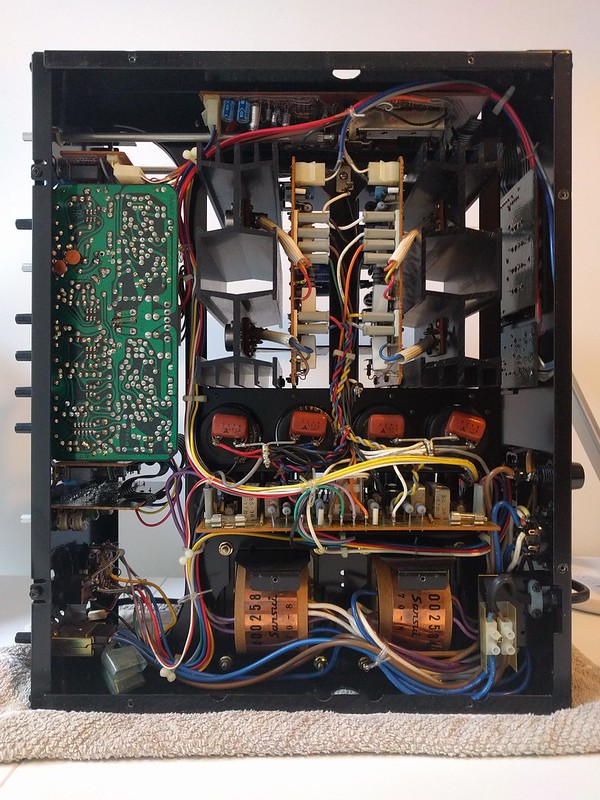About 2 months ago I bought a beautiful but barely working Sansui AU-717 integrated. It took a long time to come out of protection mode, and the right channel would fluctuate between the set volume to nothing on its own. The controls were noisy, and the boards were covered in the infamous corrosive glue that Sansui used during that era. The biases and offsets was pretty far from the service manual specs. The 15000uF 63V reservoir caps weren't great -- one was measured just over 6000uF while the rest were closer to 9000-10000uF.
I took it apart, did some cleaning, took lots of photos and marked some wire positions. I removed all of the electrolytic caps, some film caps, some diodes, thermal fuses, trim pots, and a bunch of resistors that the glue had reached. Also, the speaker relay (delay and protection) was removed. It was clear where the glue was touching component leads -- it had turned bright red in those areas as opposed to the normal cloudy yellow. The affected component leads were dark and corroded. I used a pin vise and micro bits to clean out the rubbery glue that was still in some of the through holes. The entire back side of each PCB was covered in a thick, tacky, clear film of flux. Each board was scrubbed and washed with IPA several times until clean.
New parts went in easily, and I desoldered and straightened some components that were at odd angles and close to touching other parts (mostly transistors, caps, and vertically oriented resistors). I did more dust/grime cleaning as it went back together. All the switches and pots were flushed/cleaned with Servisol.
It now sounds excellent. Amazingly, while the carton wasn't original (it was for a TU-517), the original foam pieces contained never installed rack handles and rear bumpers. I don't have a rack, and don't really want to, but it does look pretty nifty with the handles installed.
43 years of dust and filth:
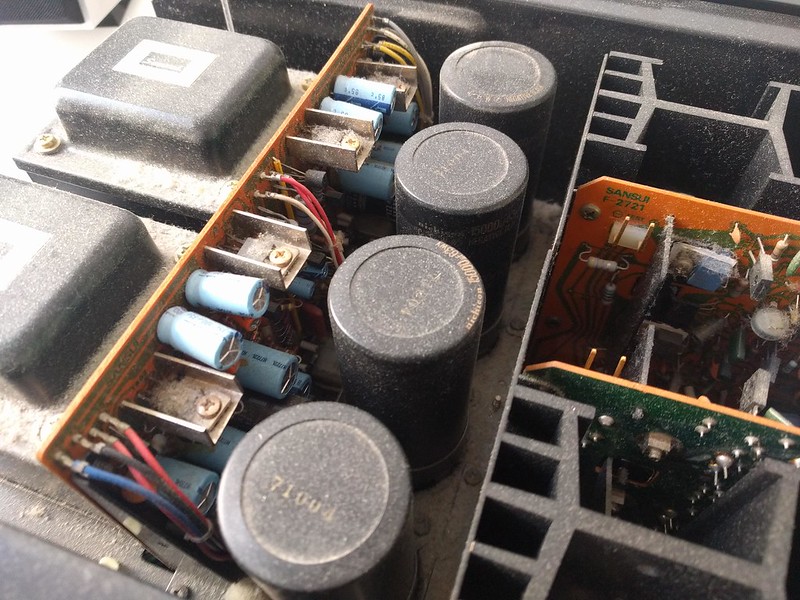
Old spring clip terminals (one broken):
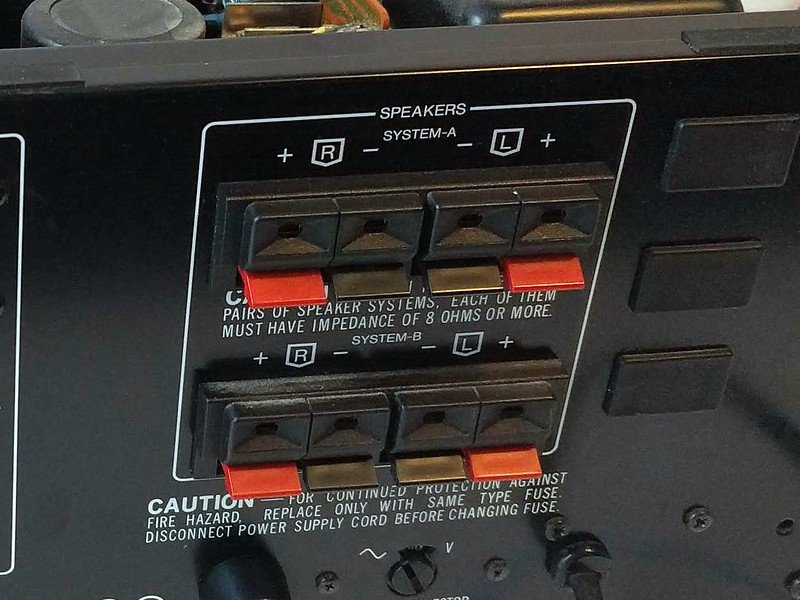
PSU board with caps removed, showing red glue where component leads were corroding:

New binding posts with adapter plates I designed and 3D printed:
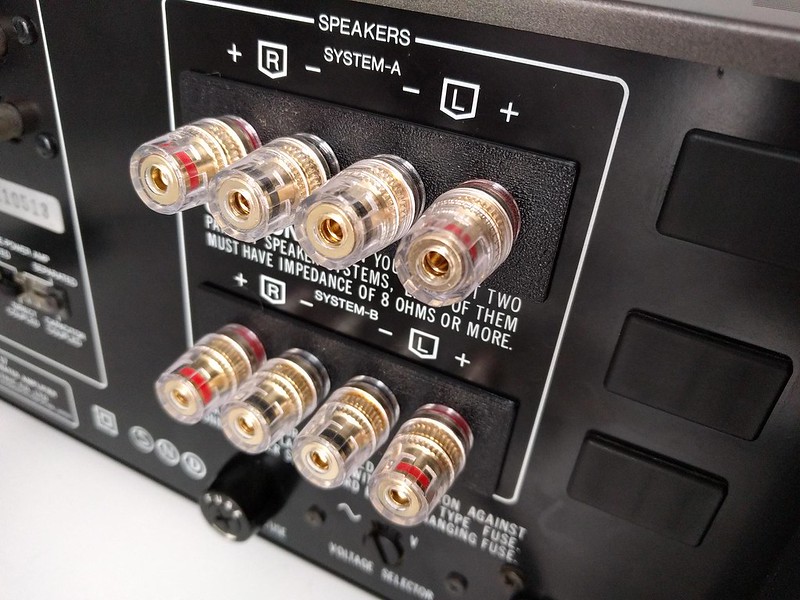
All the old parts out (lined up like the Ummagumma cover):
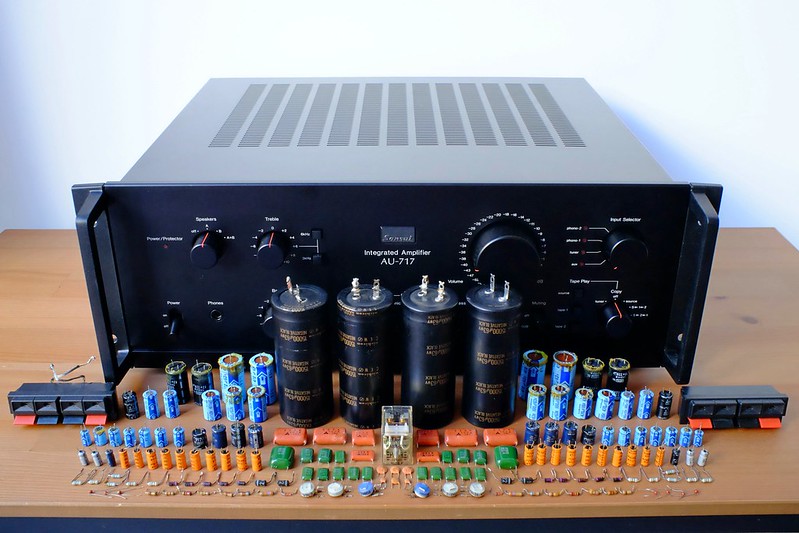
Result!:
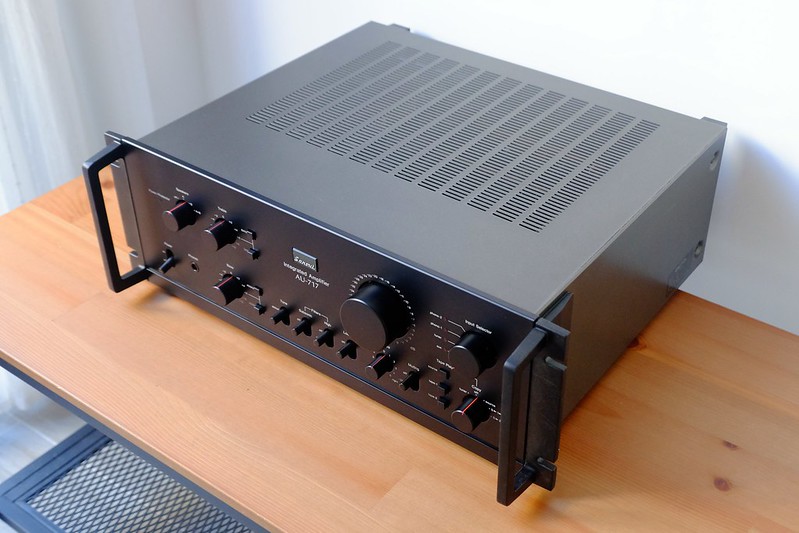
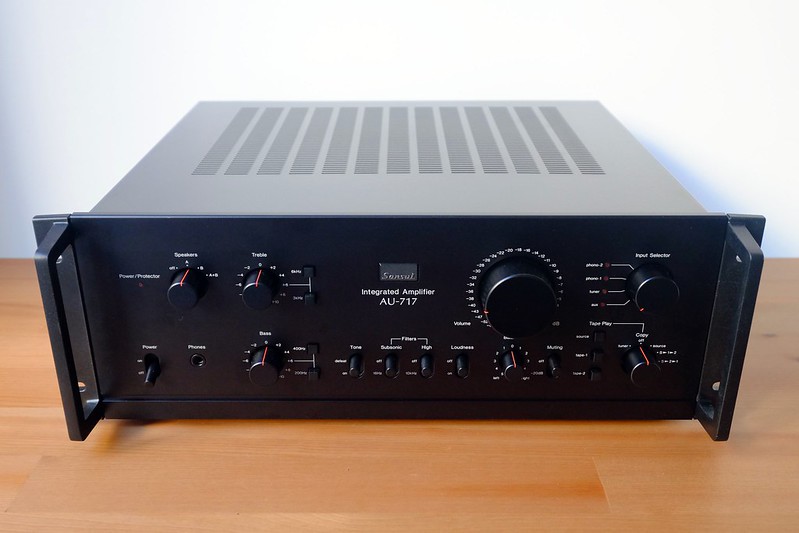
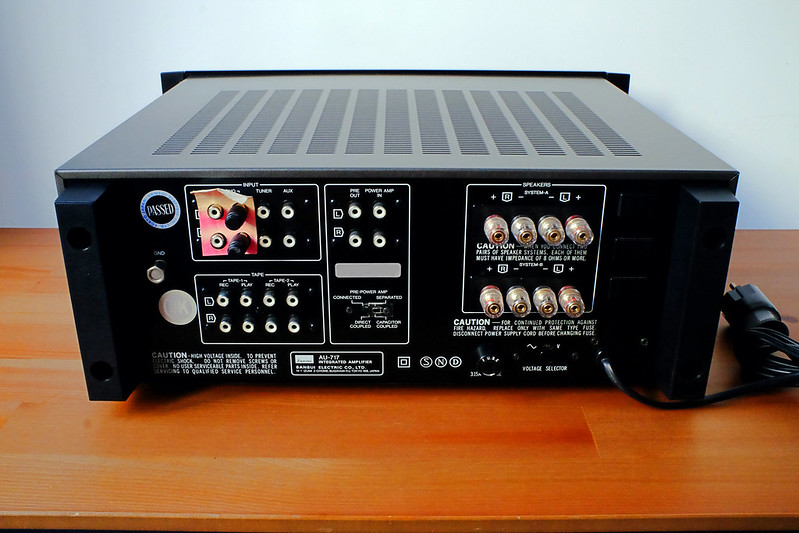
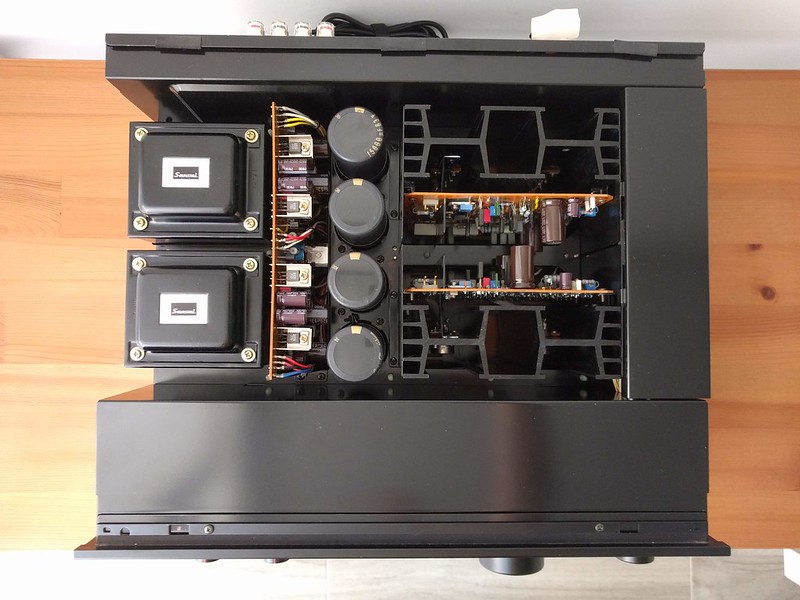
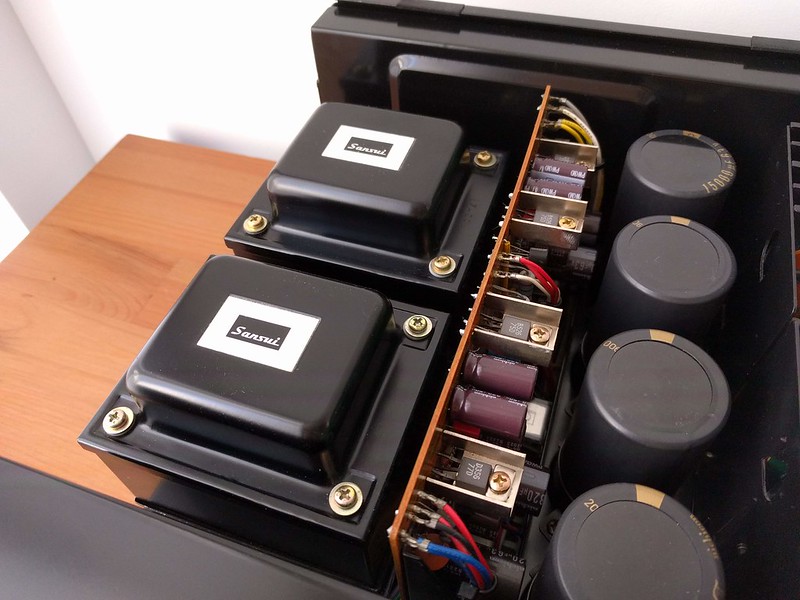
More photos here.
I took it apart, did some cleaning, took lots of photos and marked some wire positions. I removed all of the electrolytic caps, some film caps, some diodes, thermal fuses, trim pots, and a bunch of resistors that the glue had reached. Also, the speaker relay (delay and protection) was removed. It was clear where the glue was touching component leads -- it had turned bright red in those areas as opposed to the normal cloudy yellow. The affected component leads were dark and corroded. I used a pin vise and micro bits to clean out the rubbery glue that was still in some of the through holes. The entire back side of each PCB was covered in a thick, tacky, clear film of flux. Each board was scrubbed and washed with IPA several times until clean.
New parts went in easily, and I desoldered and straightened some components that were at odd angles and close to touching other parts (mostly transistors, caps, and vertically oriented resistors). I did more dust/grime cleaning as it went back together. All the switches and pots were flushed/cleaned with Servisol.
It now sounds excellent. Amazingly, while the carton wasn't original (it was for a TU-517), the original foam pieces contained never installed rack handles and rear bumpers. I don't have a rack, and don't really want to, but it does look pretty nifty with the handles installed.
43 years of dust and filth:

Old spring clip terminals (one broken):

PSU board with caps removed, showing red glue where component leads were corroding:

New binding posts with adapter plates I designed and 3D printed:

All the old parts out (lined up like the Ummagumma cover):

Result!:





More photos here.
Last edited:


